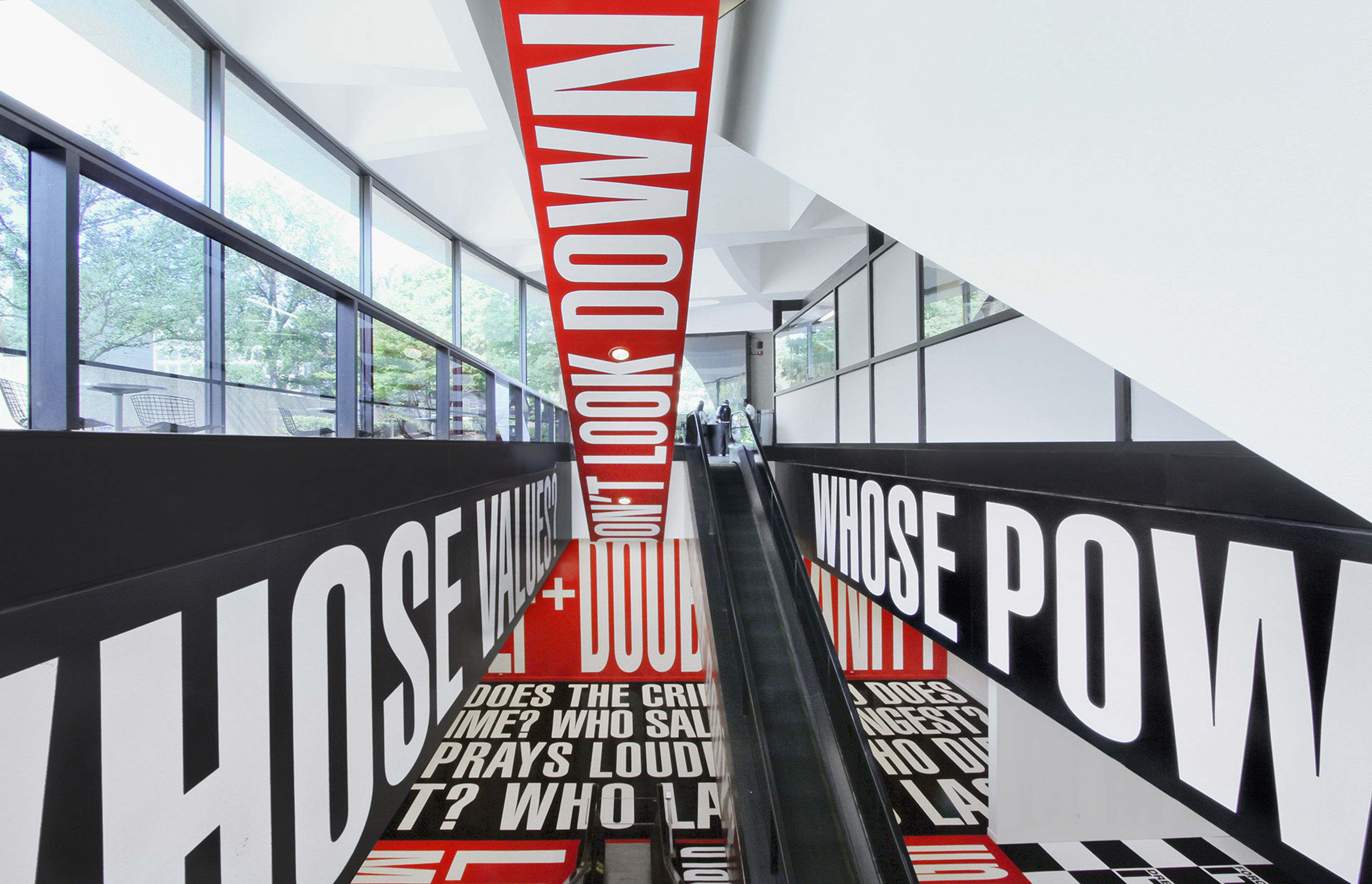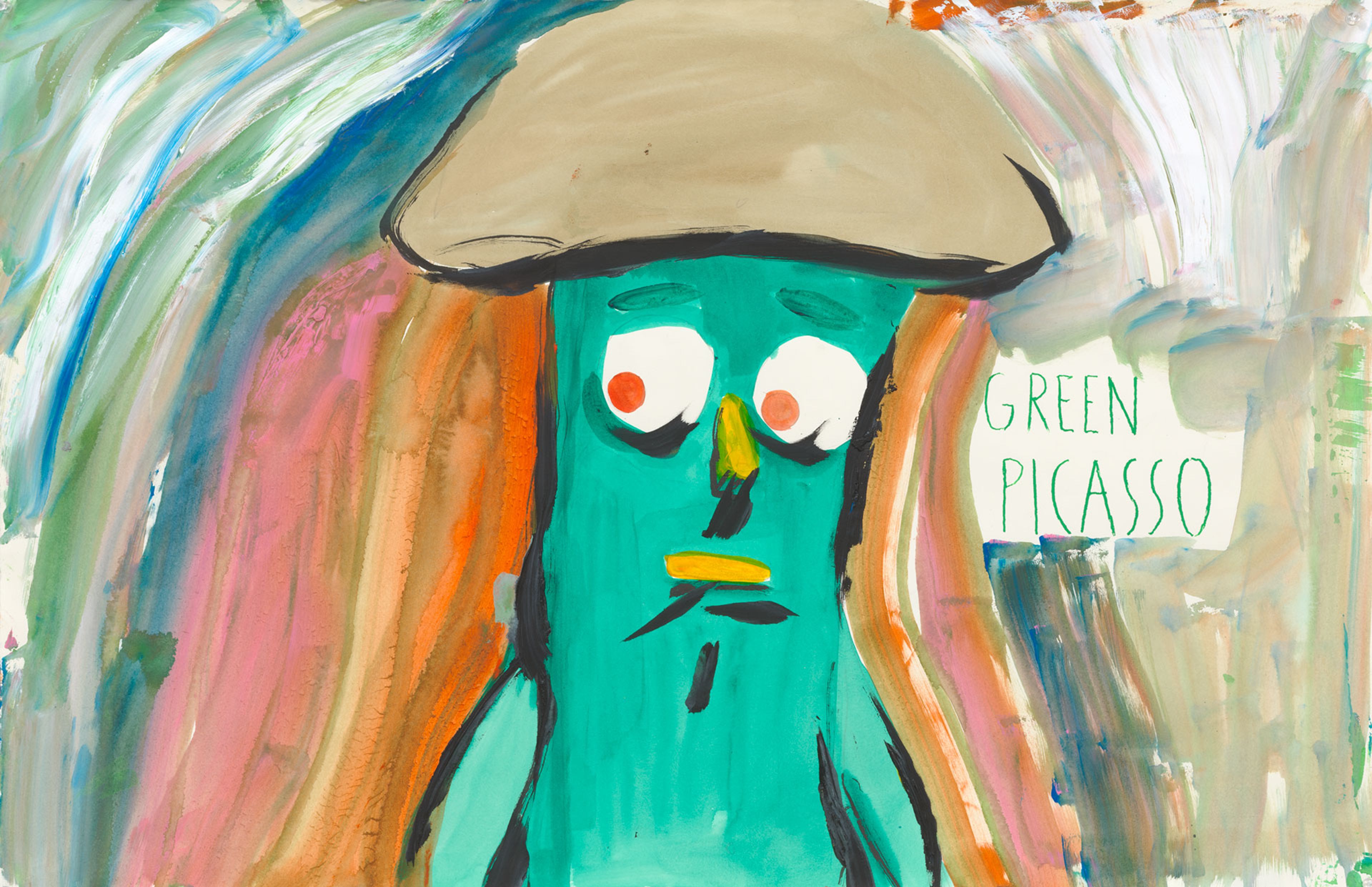November 21, 2019
November 20, 2019
(New York, London, Paris, Hong Kong – November 21, 2019) David Zwirner is pleased to announce the representation of American artist Barbara Kruger in collaboration with Sprüth Magers.
Since the late 1970s, Kruger has consistently engaged with images and language as tools of communication, repurposing them to create works in a variety of scales, settings, and formats. Directly and powerfully addressing the viewer, Kruger’s collages, installations, billboards, and videos reveal and question established power structures and social constructs.
Kruger rose to prominence in the early eighties, creating large scale black-and-white photo-based images often framed in red and overlaid with the languages of direct address. Her engagement with issues of value, gender, marginality, and the construction of consensus, coupled with a powerful visuality, continues to be singularly recognizable and resonant today.
As art historian Miwon Kwon notes, “Kruger doesn’t instruct us on what position to take so much as reveal how positions are made: what we take to be our naturally or innately personal positions and identities are, in fact, publicly constructed. Her work demands that each of us recognize the fact that our identities and positions, our mark of difference from one another in terms of gender, class, race, age, religion, etc. are defined within the structuring powers of language, image and space, that is, cultural systems of representation.”1
David Zwirner states, “I have greatly admired Barbara Kruger since I first saw her work at Monika Sprüth Galerie in Cologne more than thirty years ago. Her work has become even more essential in the decades since, speaking truth to power and transitioning from the museum into mainstream culture. We are honored to represent her and look forward to exhibiting her work.”
Barbara Krugerwas born in 1945 in Newark, New Jersey and studied at Syracuse University and Parsons School of Design, New York. In 1966, she began working for Condé Nast in the design department at Mademoiselle, where she honed her fluencies with pictures and words. In the pursuant decade, Kruger worked as a freelance picture editor and graphic designer for magazines and books. The artist’s work was first exhibited in the Whitney Biennial in 1973, and the following year she had a solo exhibition at Artists Space, New York. Subsequent solo shows were held at P.S.1 Contemporary Art Center, Long Island City, New York (1980–1981),the Institute of Contemporary Arts, London (1983), Gagosian Gallery, Los Angeles (1982), Rhona Hoffman Gallery, Chicago (1984), and Mary Boone Gallery, beginning in 1987, among other venues. In 1985, her work was featured in a solo presentation at Monika Sprüth Galerie, Cologne, and was shortly thereafter included in the first of the gallery’s influential series of Eau de Cologne exhibitions featuring emerging contemporary female artists. Kruger went on to have a number of significant solo shows at Sprüth Magers, most recently Barbara Kruger: Forever in 2017–2018 at the gallery’s Berlin location.
In 1999–2000, The Museum of Contemporary Art, Los Angeles, organized a mid-career retrospective highlighting the artist’s work from 1978 to the present that traveled to the Whitney Museum of American Art, New York. Other significant solo exhibitions of Kruger’s work have been organized by the Palazzo delle Papesse - Centro Arte Contemporanea, Siena (2002); Skarstedt Gallery, New York (2003, 2009); Moderna Museet, Stockholm (2008–2011); Schirn Kunsthalle, Frankfurt (2010–2011); Pinakothek der Moderne, Munich (2011–2012); Kunsthaus Bregenz, Austria (2013–2014); Modern Art Oxford (2014); and the National Gallery of Art, Washington, DC (2016-2017). The artist’s first solo show in Asia is currently on view through December 29, 2019 at the Amorepacific Museum of Art, Seoul.
Kruger has created a number of public installations, which have appeared in museums, municipal buildings, train stations, and parks, as well as on buses and billboards. Site-specific projects by the artist include installations for the Public Art Fund, New York (1989, 1991, 1997, and 2000); Whitney Museum of American Art, New York (1990 and 2010); The Los Angeles County Museum of Art (2008); Art Gallery of Ontario, Toronto (2010); Hirshhorn Museum and Sculpture Garden, Washington, DC (2012); The Hammer Museum, Los Angeles (2014); Vancouver Art Gallery (2016); Metro Bellas Artes, Mexico City (2016); and The Museum of Contemporary Art, Los Angeles (2018), among others.
In 2005, Kruger was awarded the Golden Lion for Lifetime Achievement at the Venice Biennale, where she was also commissioned to design the facade of Italy’s national pavillion. In 2019, the artist was awarded the Kaiserring (or “Emperor’s Ring”) prize from the city of Goslar, in Germany, and currently has a solo exhibition in conjunction with this honor at the Mönchehaus Museum Goslar, on view through January 26, 2020.
Work by the artist is represented in international museum collections, including the Art Institute of Chicago; The Broad, Los Angeles; Fonds régional d’art contemporain (FRAC) de Bourgogne, Dijon; Institute of Contemporary Arts, London; Los Angeles County Museum of Art; The Metropolitan Museum of Art, New York; Musée d’art moderne et d’art contemporain, Nice, France; Museum of Contemporary Art, Chicago; The Museum of Contemporary Art, Los Angeles; Museum of Fine Arts, Boston; Museum Ludwig, Cologne; The Museum of Modern Art, New York; National Gallery of Art, Washington, DC; Saint Louis Art Museum, Saint Louis; Seibu Museum of Art, Tokyo; Solomon R. Guggenheim, New York; and the Tate Modern, London. Kruger lives and works in Los Angeles and New York.
For all press inquiries, contact Julia Lukacher +1 212 727 2070 jlukacher@davidzwirner.com
Image: Installation view, Barbara Kruger: Belief + Doubt, Hirshhorn Museum and Sculpture Garden, Washington, DC, 2012-ongoing. Photo by Cathy Carver
1Miwon Kwon, “A Message from Barbara Kruger: Empathy Can Change the World,” in Barbara Kruger (New York: Rizzoli, 2010), p. 90.


